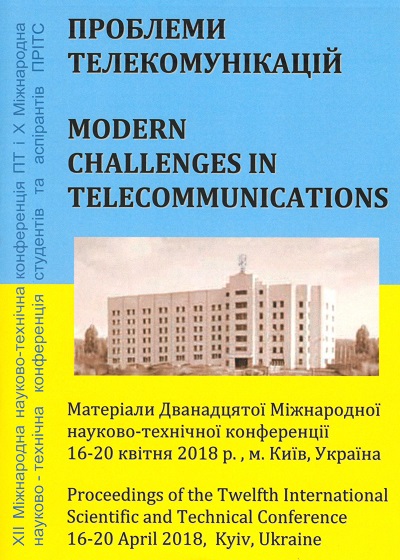FUZZY LOGIC USAGE FOR THE DATA PROCESSING IN THE INTERNET OF THINGS NETWORKS
Анотація
ВИКОРИСТАННЯ НЕЧІТКОЇ ЛОГІКИ ДЛЯ
ОБРОБКИ ДАНИХ У МЕРЕЖАХ ІНТЕРНЕТУ РЕЧЕЙ
Перевантажена мережа Інтернету Речей потребує обробки даних для аналізу залежності стану системи від вхідних параметрів. При роботі з великими обсягами даних вже недостатньо простого та статистичного аналізу даних. Метою роботи є визначення найбільш ефективного методу кластеризації для систем, які призначені для визначення якості зв’язку, за рахунок проведення аналізу існуючих методів кластеризації у нечітких системах. В статті розглянуто різні типи кластеризації нечітких систем, які підходять до використання в різних телекомунікаційних систем. У результаті аналізу алгоритм нечітких с-середніх вибрано як найефективнішим за критерієм обчислювальної складності, для кластеризації у мережах визначення якості зв’язку.
An overloaded Internet of Things (IoT) network needs data processing to analyses the state of the system from the input parameters. When working with large volumes of data, there is not enough simple and statistic data analysis. The purpose of the work is to determine the most effective clustering method for systems that are intended to determine the quality of the connection by analyzing existing cauterization methods in fuzzy systems. In the article various types of clustering of fuzzy systems that are suitable for use in various telecommunication systems are considered. As a result of the analysis, the algorithm c-means is selected as the most effective by the criterion of computational composition, for clustering in the networks of determining the quality of communication.
Посилання
R. Lea, M. Blackstock, Smart cities: An iot-centric approach, in: Proceedings of the 2014 International Workshop on Web Intelligence and Smart Sensing, IWWISS’14, ACM, NewYork, NY, USA, 2014, pp.12–15.
M. Nikravesh, Evolution of fuzzy logic: From intelligent systems and computation to human mind, Stud. Fuzziness Soft Comput. 2007, pp. 37–53.3. J. G. Proakis, Digital Communication, 4th ed. Boston, MA: McGraw-Hill, 2000.
G. Cueva-Fernandez, J. Pascual Espada, V. Garc´ıa-D´ıaz, R. Gonzalez Crespo, Fuzzy decision method to improve the information exchange in a vehicle sensor tracking system, Appl. Soft Comput. 2015, pp. 708–716.
Sugeno M., Yasukawa T. A fuzzy-logic-based approach to qualitative modeling // IEEE Trans. on Fuzzy Systems, 1993, vol. 1, pp. 7–31.
Emami M.R., Turksen I.B., Goldenberg A.A. A unified parameterized formulation of reasoning in fuzzy modeling and control // Fuzzy Sets and Systems, 1999, vol. 108, pp. 59–81.
##submission.downloads##
Як цитувати
Номер
Розділ
Ліцензія
Авторське право (c) 2018 Vasyl V. Kurdecha, Ivan O. Ishchenko, Andrii G. Zakharchuk, Nataliia V. Kunieva

Ця робота ліцензується відповідно до Creative Commons Attribution 4.0 International License.
Authors who submit to this conference agree to the following terms:a) Authors retain copyright over their work, while allowing the conference to place this unpublished work under a Creative Commons Attribution License, which allows others to freely access, use, and share the work, with an acknowledgement of the work's authorship and its initial presentation at this conference.
b) Authors are able to waive the terms of the CC license and enter into separate, additional contractual arrangements for the non-exclusive distribution and subsequent publication of this work (e.g., publish a revised version in a journal, post it to an institutional repository or publish it in a book), with an acknowledgement of its initial presentation at this conference.
c) In addition, authors are encouraged to post and share their work online (e.g., in institutional repositories or on their website) at any point before and after the conference.

